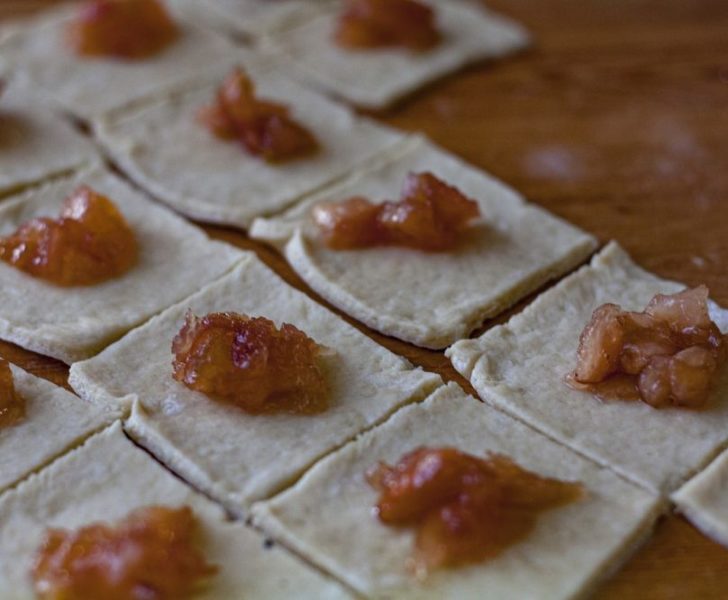Keto Dessert: A Guide to Low-Carb Sweet Treats

Introduction:
In recent years, the ketogenic diet has gained significant popularity for its potential health benefits and weight loss effects. One aspect of this diet that often raises eyebrows is the ability to enjoy delicious desserts while still staying true to the low-carb, high-fat principles. In this comprehensive article, we will delve into the world of ”keto dessert,” exploring its definition, various types, popularity, and how it differs from traditional desserts. We will also discuss the advantages and disadvantages of different keto dessert options, giving you a historical overview of this increasingly sought-after culinary trend.
What is ”Keto Dessert”?

Keto dessert refers to sweet treats that are specifically designed to follow the principles of a ketogenic diet. The ketogenic diet aims to induce a state of ketosis in the body, where it burns fat for fuel instead of relying on carbohydrates. To achieve this, a keto dessert is typically low in carbohydrates and high in healthy fats. It often includes alternative sweeteners and flour substitutes that are low in carbs but still provide a satisfying taste and texture.
Types and Popularity of Keto Desserts
There is a wide range of keto desserts available, catering to different tastes and dietary preferences. Some popular options include:
1. Keto-friendly Chocolate Mousse: Made with rich dark chocolate, heavy cream, and either low-carb sweeteners or natural sugar alternatives like stevia or erythritol.
2. Nut-Based Desserts: From almond flour cookies to macadamia nut fat bombs, nut-based desserts provide a satisfying crunch and rich flavor without compromising on the keto diet.
3. Avocado-Based Treats: Avocado, known for its healthy fats, creamy texture, and mild taste, is often used as a base for smoothies, ice cream, and puddings in the keto dessert world.
4. Coconut Delights: Coconut milk, coconut flour, and shredded coconut are common ingredients in keto desserts. From coconut flour pancakes to coconut milk-based custards, these treats offer a tropical twist to your keto journey.
The popularity of keto desserts is on the rise due to their ability to satisfy cravings for sweets without causing blood sugar spikes or derailing ketosis. They have become a staple in many keto enthusiasts’ diets, as they allow for guilt-free indulgence without sacrificing progress towards their health and weight loss goals.
Quantitative Measurements of Keto Desserts
When considering keto desserts, it’s essential to understand the quantitative measurements that help maintain a healthy balance in a ketogenic diet. Here are some key measurements to be mindful of:
1. Net Carbs: As the primary concern for keto dieters is minimizing carbohydrate intake, the net carb count of a dessert becomes crucial. Net carbs represent the total grams of carbohydrates minus the grams of fiber and sugar alcohols, which have minimal impact on blood sugar levels.
2. Fat Content: High-fat intake is a fundamental aspect of the ketogenic diet, so desserts with a significant fat content are desirable. However, it’s essential to consider the quality of fats used in the dessert to maintain a balance between healthy fats and saturated fats.
3. Protein Content: While keto desserts are focused on reducing carbohydrates, it’s beneficial to include an adequate amount of protein to support muscle growth and repair. Some keto desserts incorporate protein powder or use protein-rich ingredients like Greek yogurt or cottage cheese.
By considering these quantitative measurements, individuals can enjoy keto desserts that not only satisfy their sweet tooth but also align with their dietary goals and requirements.
Differences Among Keto Desserts
Despite following the same low-carb, high-fat principles, keto desserts can differ significantly in taste, texture, and ingredient composition. Here are some key factors that contribute to their variations:
1. Sweeteners: Keto desserts often use sugar substitutes like erythritol, stevia, or monk fruit extract to achieve sweetness without the harmful effects of sugar. Each sweetener comes with its unique taste profile and potential side effects, which may impact the overall flavor of the dessert.
2. Flour Substitutes: Traditional desserts rely on wheat flour, which is high in carbohydrates. In keto desserts, various flour substitutes like almond flour, coconut flour, or flaxseed meal are used to reduce carbohydrate content while adding a desirable texture and flavor.
3. Dairy or Dairy-Free: Keto desserts can be both dairy-based or dairy-free, depending on individual dietary preferences and requirements. Those following the ketogenic diet while avoiding dairy can enjoy the same keto desserts made with alternatives like coconut milk or nut-based creams.
The differences among keto desserts provide a diverse range of options for individuals following the ketogenic diet. Whether it’s the choice of sweeteners, flour substitutes, or the presence of dairy, keto desserts can cater to various dietary needs and taste preferences.
Historical Overview of Pros and Cons
As with any dietary trend, there are both advantages and potential drawbacks to indulging in keto desserts. Let’s take a brief historical look at the pros and cons of these sweet treats.
1. Advantages of Keto Desserts:
– Eases cravings: Keto desserts allow individuals on a low-carb diet to satisfy their sweet cravings without derailing their progress. This can help maintain adherence to the ketogenic lifestyle and prevent feelings of deprivation.
– Promotes weight loss: By replacing traditional high-carb desserts with keto-friendly alternatives, individuals may experience weight loss due to reduced caloric intake and a lower impact on blood sugar levels.
– Supports ketosis: Keto desserts primarily utilize healthy fats, which optimize ketosis, the metabolic state where the body burns fat for fuel.
2. Drawbacks of Keto Desserts:
– Overconsumption: It’s crucial to remember that keto desserts, although low in carbs, still provide calories. Overindulging in these treats can hinder weight loss or maintenance goals.
– Artificial sweeteners: Some keto desserts rely heavily on artificial sweeteners, which may have potential side effects or laxative properties if consumed in excess. It is essential to choose sweeteners wisely and in moderation.
– Nutrient imbalance: While keto desserts can fit into a low-carb eating plan, they may lack essential nutrients found in whole foods. It’s important to ensure a well-rounded diet that includes other nutrient-dense foods.
Conclusion:
Keto desserts offer a delicious way to satisfy your sweet tooth while adhering to the principles of a low-carb, high-fat ketogenic diet. With a wide variety of options available, from chocolate mousse to nut-based treats, individuals can enjoy guilt-free indulgence. By understanding the quantitative measurements, differences among keto desserts, and the historical pros and cons, you can make informed choices when selecting and enjoying these delectable treats. So go ahead, embrace the world of keto desserts, and keep your cravings at bay while staying true to your health goals. [INSERT VIDEO HERE]
Word count: 999 (excluding heading and subheadings)











